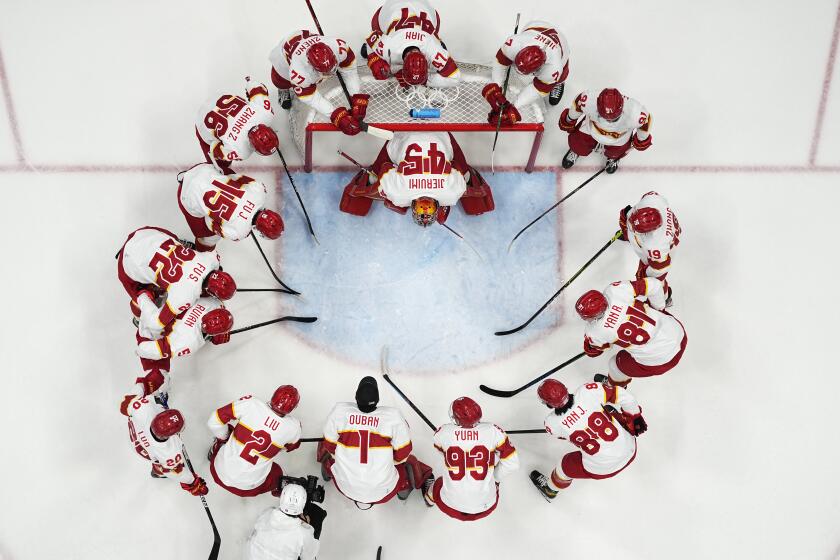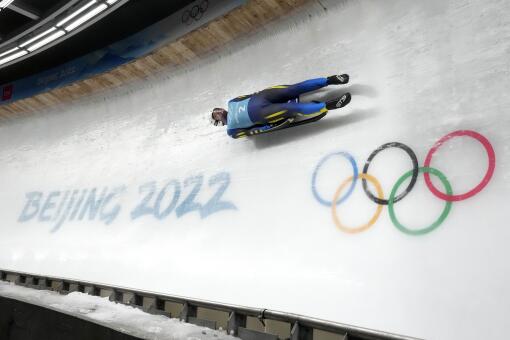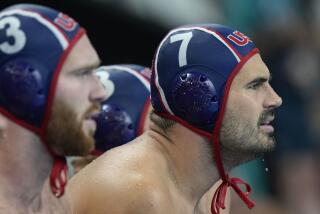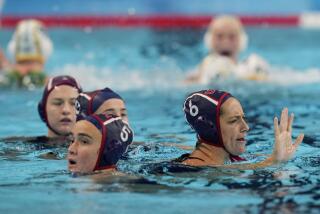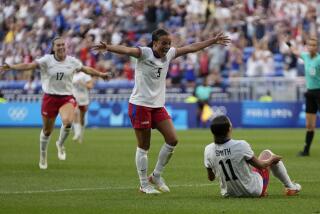Column: U.S. men’s hockey team a victim of its own unrealized expectations
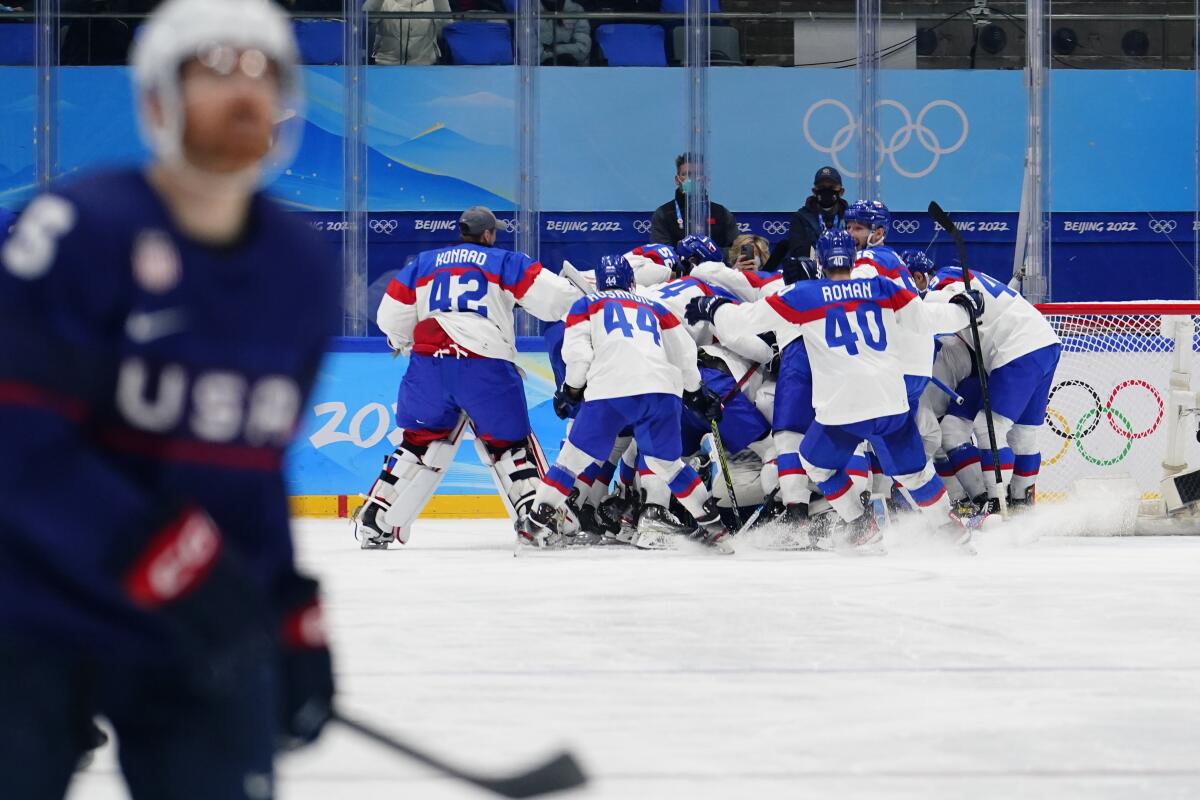
BEIJING — They’d only just begun to explore their potential when their Olympics ended abruptly, leaving members of the top-seeded U.S. men’s hockey team achingly short of what they were sure they could accomplish.
Their stunning 3-2 shootout loss to Slovakia in the tournament quarterfinals didn’t seem real to them as they glided off the ice at National Indoor Stadium on Wednesday. A play made more precisely here, a battle won there, and the youngest U.S. men’s team since 1994 might have been planning for the tournament semifinals.
Slovakia made those plays, won those battles, tied the score late in regulation after pulling their goaltender in favor of an extra skater and got the lone goal in the shootout. After Peter Cehlarik scored in the fourth round and Slovakia goaltender Patrik Rybar stopped an attempt by U.S. captain Andy Miele, the winners poured off the bench to celebrate their minor miracle.
“We had the dream that we are going to go far but we knew it’s going to be tough,” forward Juraj Slafkovsky said. “But now we are in the semifinals and it’s like, dream come true. It’s unbelievable.”
North American players are a big part of China’s men’s hockey team at the Beijing Olympics, and they see their efforts stretching beyond borders.
It was equally improbable, in a different way, to the Americans.
“It was a lot of fun. We really battled till the end,” said goalie Strauss Mann, who made three saves in the shootout before Cehlarik beat him with a forehand. “I really felt we had a lot more in us.”
They’ll never know what they might have done.
“Hockey’s a game of inches. It’s all you can say,” defenseman Steven Kampfer said. “They played well, they stuck to their identity, and when it comes down to a shootout there’s really not much else you can do.”
They could have avoided the shootout by scoring during the 83-second five-on-three advantage they gained early in the third period, but Slovakia held firm. “Really, that was the game-changer,” U.S. coach David Quinn said. “When you’ve got a five on three in that scenario and you don’t capitalize on it, you’re giving the other team a lot of hope, and they capitalized.”
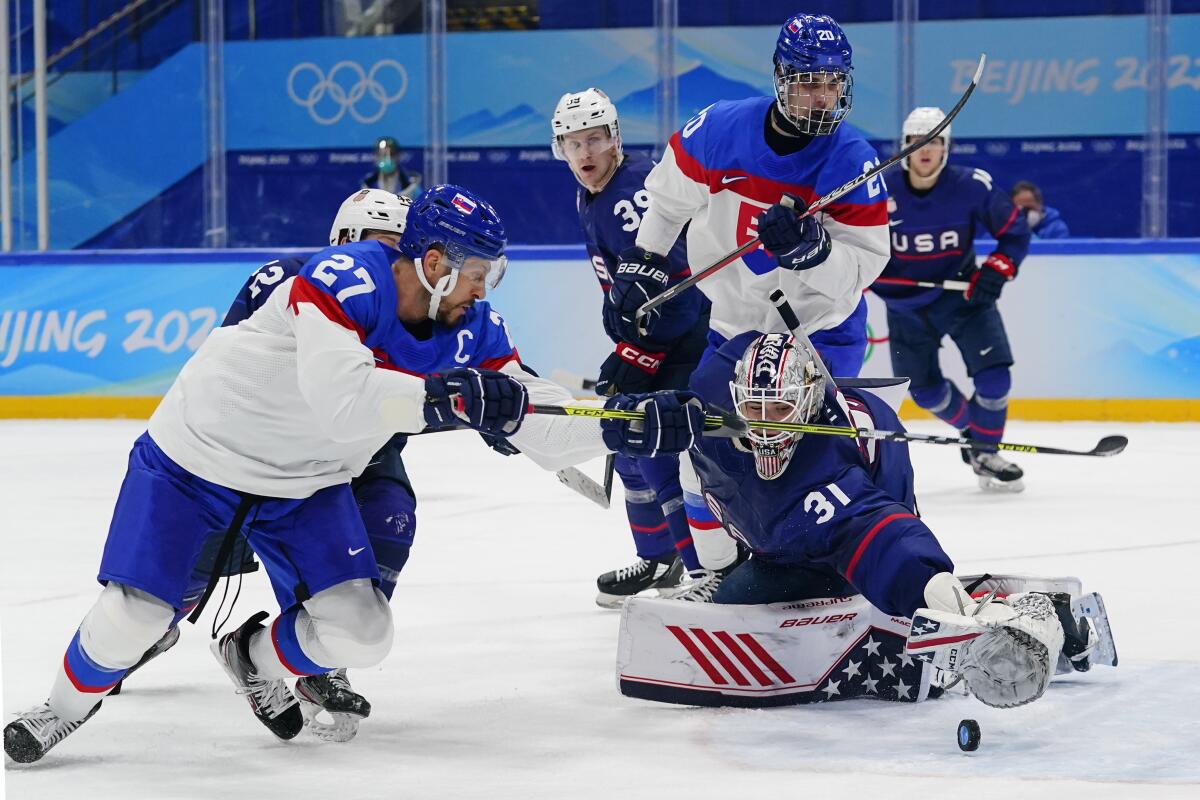
Even then, the three-on-three overtime format should have favored the Americans because of their speed and skill. “We actually had worked on it [Tuesday] for a while. We scrimmaged,” Quinn said. “Our guys felt like we were prepared, and it looked it. We had some great chances. We just weren’t able to bury our chances.”
For the third straight game the U.S. allowed the first goal. Slafkovsky, a 17-year-old who’s projected to be a top-10 pick in the NHL draft, gave Slovakia the lead at 11:45 of the first period with his fifth goal of the tournament. The U.S. had been chasing the puck in its own zone when Slovakia defenseman Peter Ceresnak saw Slafkovsky standing alone between the circles. Slafkovsky took Ceresnak’s pass and skated in a few strides before unleashing a shot that eluded Mann.
The U.S. pulled even on a well-executed passing sequence. Nick Abruzzese of Harvard, a Toronto Maple Leafs draft pick, finished it off by taking a pass from University of Michigan star Matty Beniers and slipping the puck between Rybar’s leg pads with 45.7 seconds left in the first period.
The U.S. went ahead 2-1 at 8:56 of the second period, again using their legs in transition and scoring off the rush. This time, Nathan Smith of Minnesota State passed to defenseman Nick Perbix of St. Cloud State, who found Sam Hentges in front. Hentges, a 2018 Minnesota Wild draft pick, scored from close range.
Slovakia coach Craig Ramsay, a former NHL player and coach, began to wonder whether his team would be able to keep up. “At the start of the game it looked like the U.S. was going to run us out of the building,” Ramsay said. “They were so fast, and their [defensemen] were involved. We just found a way.”
Slovakia’s penalty killing — Ramsay’s specialty during his 14-year NHL career — lifted them in the third period. They pulled even with 43.7 seconds left, when Marek Hrivik converted the rebound of a shot by Michal Cajkovsky. “We knew that they were funneling a lot of pucks to the net there at the end,” Kampfer said. “One just gets free and they get a stick on it, tie the game up and gain a little bit of momentum.”
Rybar stopped Brendan Brisson and Sean Farrell in the shootout before Matt Knies shot wide. He then stopped Smith to start the fourth round. After Cehlarik scored, Rybar ended the game by stopping Miele. “It’s a tough situation with the game riding on you. I wanted to score, I didn’t and it stinks,” Miele said.
The U.S. men haven’t won an Olympic gold medal since 1980 and haven’t won any medal since 2010. With NHL players unavailable, USA Hockey built this roster with 15 college players and a mix of minor leaguers and Europe-based pros. It was the right formula because it gave experience on the Olympic stage to players who will soon be impact players in the NHL and might return if the NHL again allows players to participate in the Games. This roster might not have been the exact right blend, but their skill and pace made them worth watching.
“We were joking that we still haven’t lost a game, really. We lost a shootout. So that’s the frustrating part,” Quinn said. “I think it speaks volumes to the depth of hockey in America. The players don’t just come from cold-weather areas anymore. The depth throughout American hockey is the best it’s ever been, and USA Hockey’s in great hands.”
More to Read
Go beyond the scoreboard
Get the latest on L.A.'s teams in the daily Sports Report newsletter.
You may occasionally receive promotional content from the Los Angeles Times.

